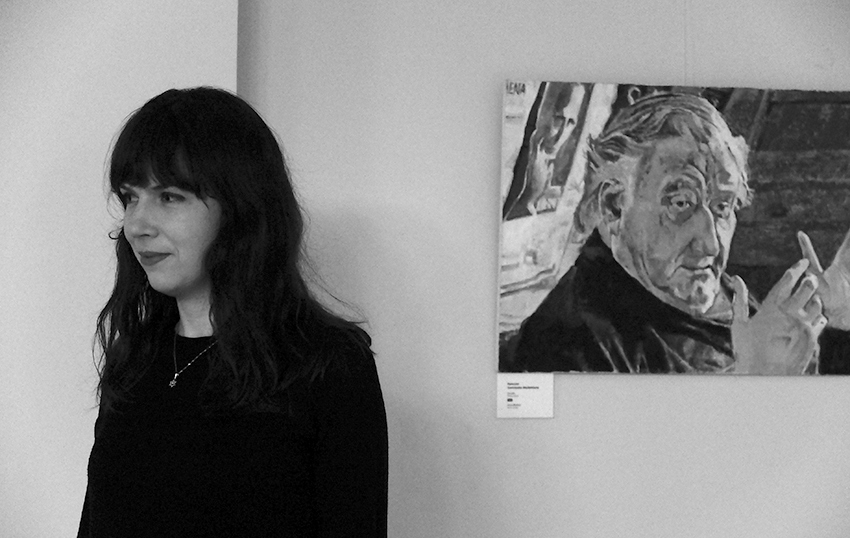GENERATIONS AND DESTINIES |
← |
The Savickas collection of the Vilna Gaon Museum of Jewish History consists of the works of five artists and four members of the Savickas family – Jurgis Savickis, Algirdas Savickis, Augustinas Savickas, Raimondas Savickas and Ramunė Savickaitė. The fate of the family reflects more than a hundred years of Lithuanian history.
| VOWELS I & A Five artists, four generations and more than a century of Lithuanian history which told ruthlessly on the fate of the Savickas family. Or should it be spelled ‘the Savickis family’? This one-letter difference in the family name is a symbol of the entire epoch that sank into oblivion, including the historic turning-point ordained by World War II, which terminated Algirdas Savickis’ (1917-1943) life at such a young age. The family history has it all: the expectant life of the Lithuanian diplomat and writer Jurgis Savickis and his family in pre-war Europe, including his fortuneless marriage to his wife Ida Trakiner-Savickienė, born into St Petersburg Litvak family, and finally the long years of World War II that separated the family for good. The ill-fated love of their elder son Algirdas for the Jewish girl Julika, his voluntary retreat to the Kaunas Ghetto together with his love and her little daughter Regina, where Algirdas was shot to death by a guard, and the disappearance and death in uncertain circumstances of Ida Savickienė at the moment when German army was already retreating from Lithuania will always remain part of the family history. As a result, Algirdas Savickis ‘remained’ a mere brother of Augustinas (by then already) Savickas (1919-2012) and had little chance to make his own contribution to the Lithuanian art. Even his father Jurgis did not quite know why Augustinas changed his family name to Savickas. In his memoirs ‘Green Silence’ (2002) Augustinas wrote: ‘When the war began I ran from Lithuania to the Soviet Union. My brother Algirdas and my mother stayed in Lithuania. They both perished. <..> I understood that if I kept my original family name, I would face hard times in the Soviet Union. First of all, I tore to pieces my diplomatic passport which read ‘AUGUSTINAS de SAVICKIS’ (the French ‘de’ was a symbol of aristocratic descent).’ ‘After an obsessive but unsuccessful search for the Soviet paradise’ in the Machishche stone-pit and several repeated attempts to take his own life out of sheer desperation, Augustinas returned to Lithuania. He was destined to become one of the most famous painters of Lithuania and a PhD in art critique. The tragic fate of his mother and brother left an indelible mark on the artist’s creative life and was reflected in many of his sad large-scale paintings. By adopting a different family name Augustinas adopted a different identity of the new epoch. Nonetheless, his past life ‘haunted’ his soul in many different ways. |
Ida Savickienė and her sons Algirdas (on the left) and Augustinas |
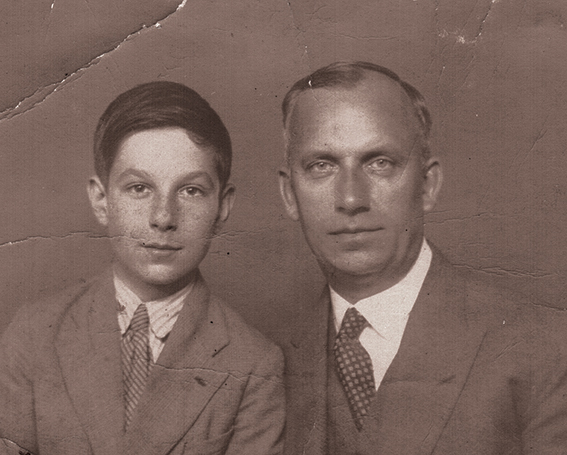 |  | |
|
Jurgis Savickis and his son Algirdas in Berlin in 1930 |
Augustinas (on the left) and Algirdas Savickiai |
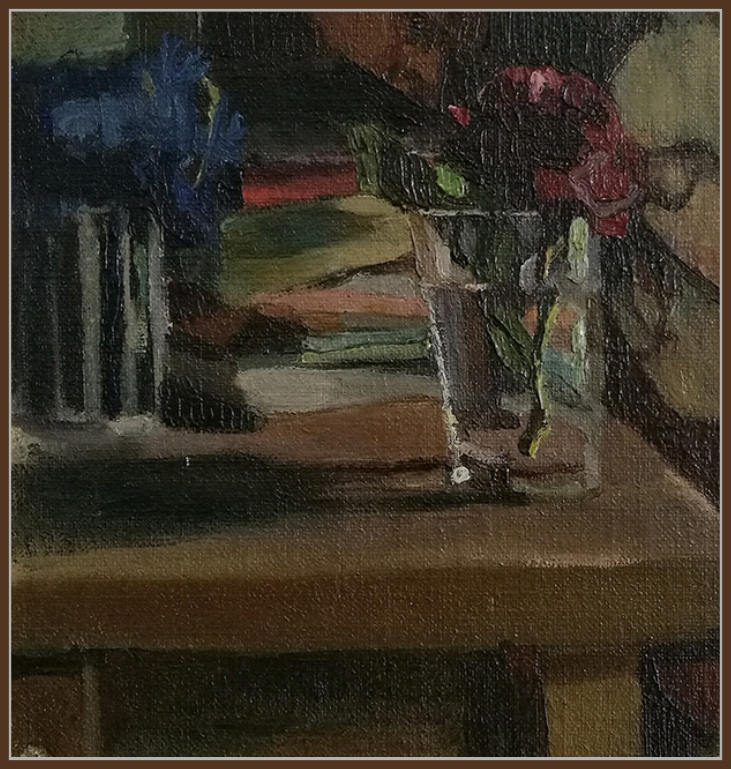 | |
|
Jurgis Savickis. Still Life with a Flower. 1920, Oil on cardboard
|
| TREES, A MAN WITH A MEDAL, THE SUN & SHIPS ‘You and Algirdas loved to draw with coloured pencils. Algirdas used to draw trees and a man with a medal standing next to them. You tended to draw the sun and fantastic ships,’ said Salomėja Aleksienė, Algirdas’ and Augustinas’ babysitter (A. Savickas. Žalia tyla [Green Silence], 2002). Both boys had an inclination for the arts from a very young age. After graduation from Wickersdorf boarding school in Germany and his studies in St. Galen, Switzerland, Algirdas took painting classes with prof. Justinas Vienožinskis at the Art School of Kaunas. Only three of his paintings survived, but all three of them attest that Algirdas was a talented painter influenced by the then popular modernist trend. Algirdas used dampened, dark colours and grey tones to tune down all the bright colours. He had a good sense of the overall colour of a painting. Algirdas’ choice of colours reminds that of prof. J. Vienožinskis (and his contemporaries), but his form of expression is totally different: much more modern, with angular lines and even rudiments of distorted forms which were so popular among expressionists. In 1995, painter Valerija Juškienė, who studied together with Algirdas at the Art School of Kaunas, shared her memories: ‘Savickis’ works were very good and interesting. He was quiet, calm, friendly, concentrated and immersed in his inner world. Algirdas’ works were very good, because he seemed to have worked on it already. His works looked like they were painted by a real master rather than a student.’ The surviving works of Algirdas Savickis, i.e. ‘Sitter Uze’ (1937), ‘Woman in Front of a Mirror’ (1940) and ‘Panorama of Kaunas’ (1940), serve as evidence that the painter had a perfect sense of composition, was good at conveying the overall mood of a painting and had mastered the proportions of a human body. The ‘Panorama of Kaunas’ looks more like a sketch and boasts a rather non-traditional composition with a bulky shape of the monumental Christ Resurrection Church. There are several intersecting fences and a wooden pole in the foreground of the painting which break it down into several separate sections; and there is a clear-cut contrast between white snow and greyish winter sky. We do not know if Algirdas continued to paint trees and men with medals as a grown up (in his childhood he could have chosen to draw these images because of his father Jurgis who received a number of awards as a diplomat). In his mature years as a painter, Augustinas took over his brother’s visions. Augustinas’ works depicting his family are dominated by an archetypical, generalised figure (sometimes even more than one) which is usually painted on a deep, dark green background (e.g. ‘Grey Spring’, 1992). Augustinas’ characters are filled with melancholy, tragedy and loneliness. Often it is an archetypical figure of his mother, whom Augustinas missed very much for the rest of his life. The figures are distorted and look slightly reminiscent of the pensive Christ. The background of his paintings also remains rather abstract. Even though it is still possible to discern some species of flora, they are presented in a stylised manner and remind of the ‘painted’ Lithuanian folk woodcarvings. Sometimes the painter chooses gold yellow for a background, which reminds of the timeless space characteristic of an icon with no remnants of the material world and with life happening on a completely different inner level. Augustinas ‘puts’ his real identity on canvas: his close relations with his Jewish mother and the rest of the world which she represents (‘Sad Jew’ (1996), ‘Hermits’ (1990–1998)), including himself as a son of a diplomat who promoted the Lithuanian identity, and conveys it all with a sense of the omnipresent Lithuanian environment. Interestingly enough, Augustinas’ son Raimondas Savickas (1955), a graduate of Vilnius University and a representative of the next generation of artists, borrowed the image of ‘the sun and ships’ from his father’s childhood drawings and used it in his paintings. Raimondas Savickas studied painting at his father’s studio and later at the Art School of Vilnius for four years. Raimondas discovered his own style by playing with numerous combinations of bright colours. His painting ‘Childhood Days’ (1992-2017) portrays a serene family holiday scene with three shining suns, a sailing ship and a mother watching her son play. The painting evokes nostalgia and tender sadness. The sunny days are already gone, but the painting is a reflexion on his father’s and grandfather’s childhood still untouched by war, just as it is a reflexion on our own childhood when any losses were unthinkable and the world reminded of a beautiful golden ball. Raimondas painted the ‘String Duet’ (2017) to commemorate his uncle Algirdas. The music that his uncle loved so much keeps playing for ever. There are four suns in the sky. The river of time takes us to the moment where both brothers – Algirdas and Augustinas – were having time (or in this case playing) together. |
|
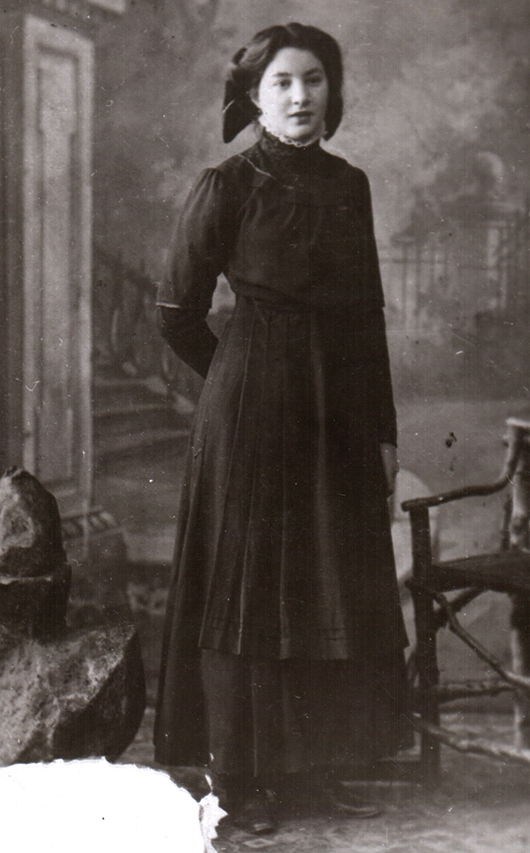 | 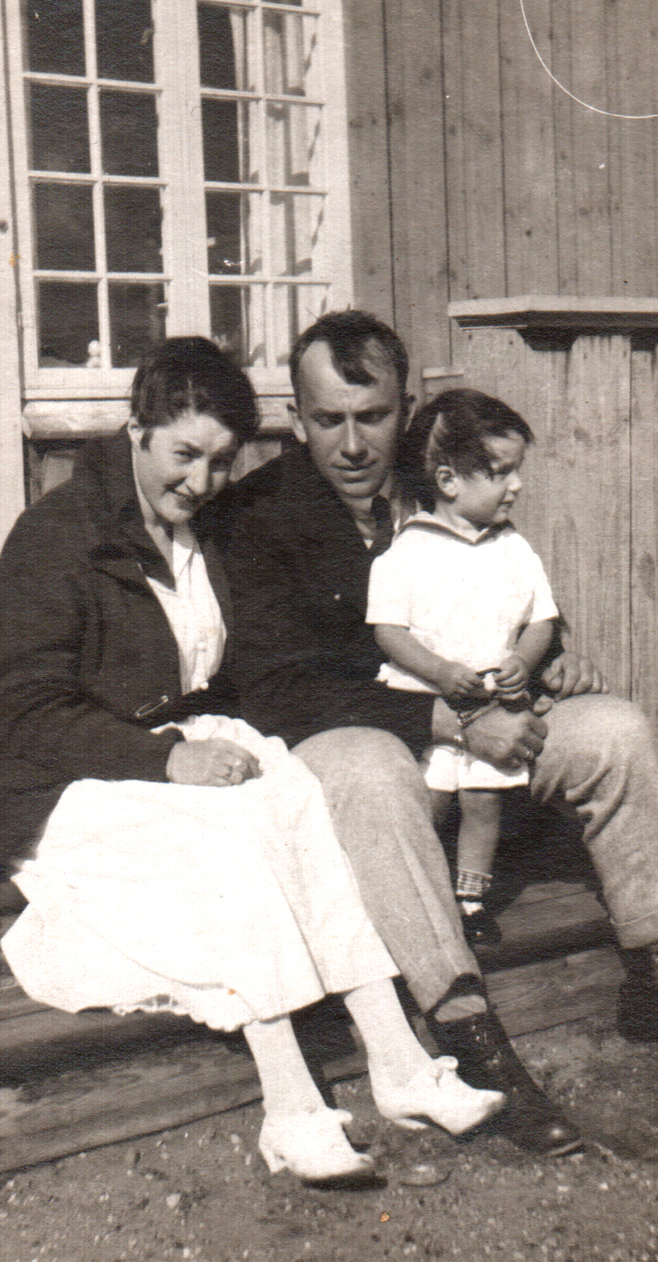 | |
|
Ida Trakiner, future wife of Jurgis Savickis, 1910 |
Jurgis Savickis and his wife Ida with their first-born Algirdas |
 |  | |
|
Algirdas Savickis. Woman Next to the Mirror. 1940, Oil on canvas | Algirdas Savickis. Sitter Uze. 1937, Oil on canvas |
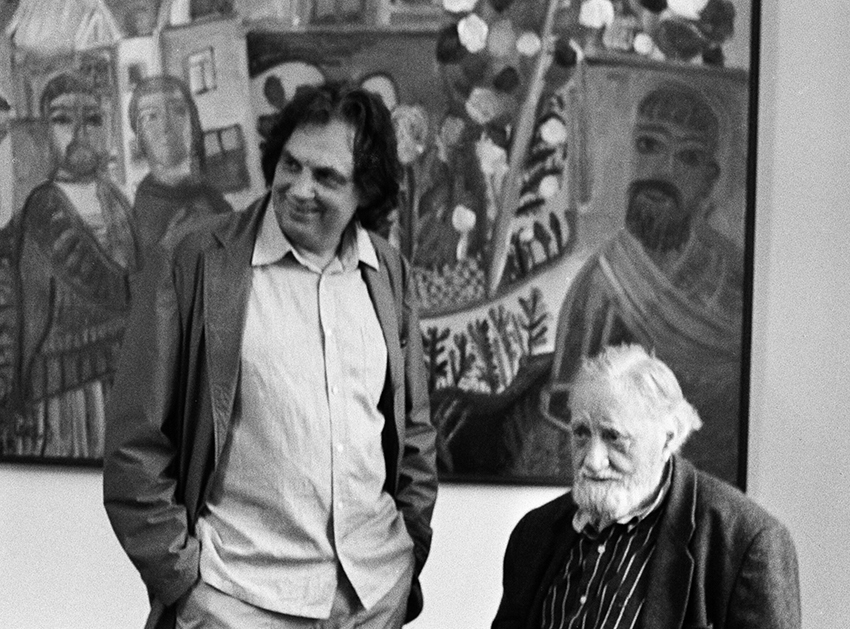 | ||
| Raimondas Savickas with his father Augustinas Savickas, 2005 |
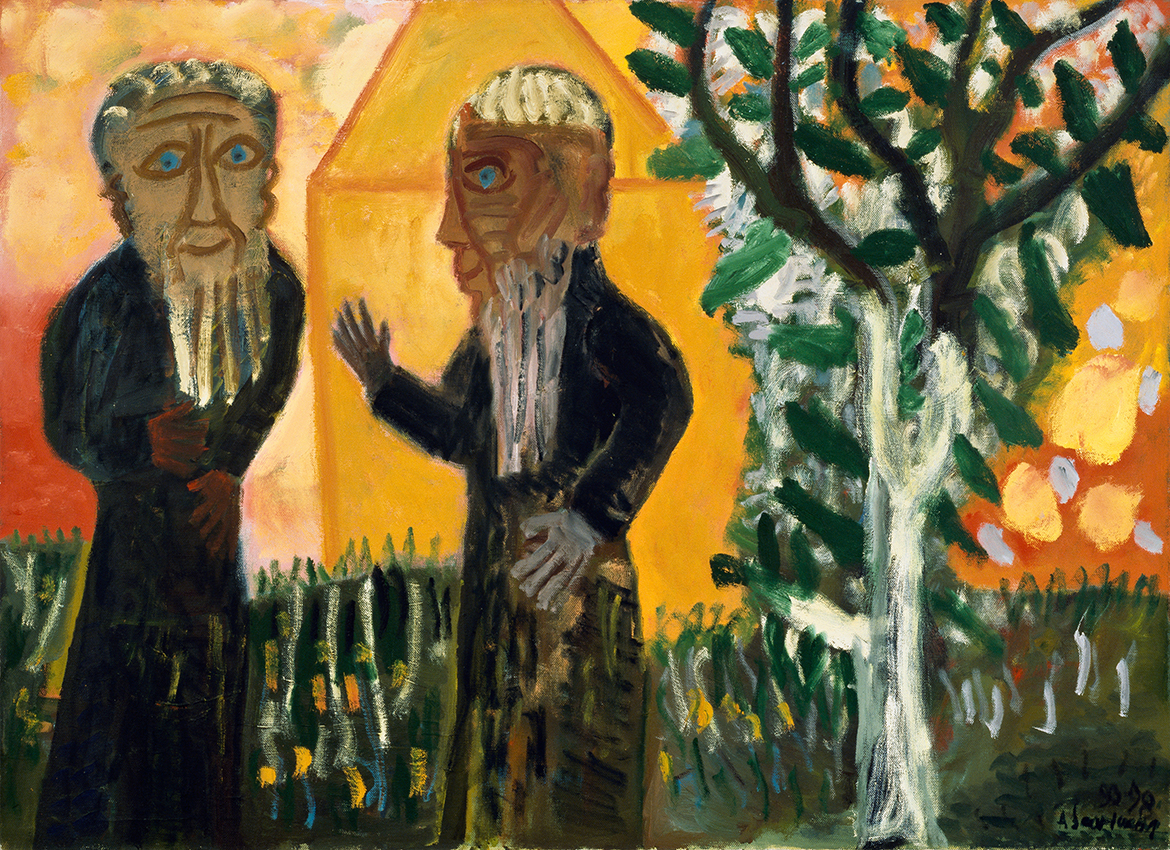 | 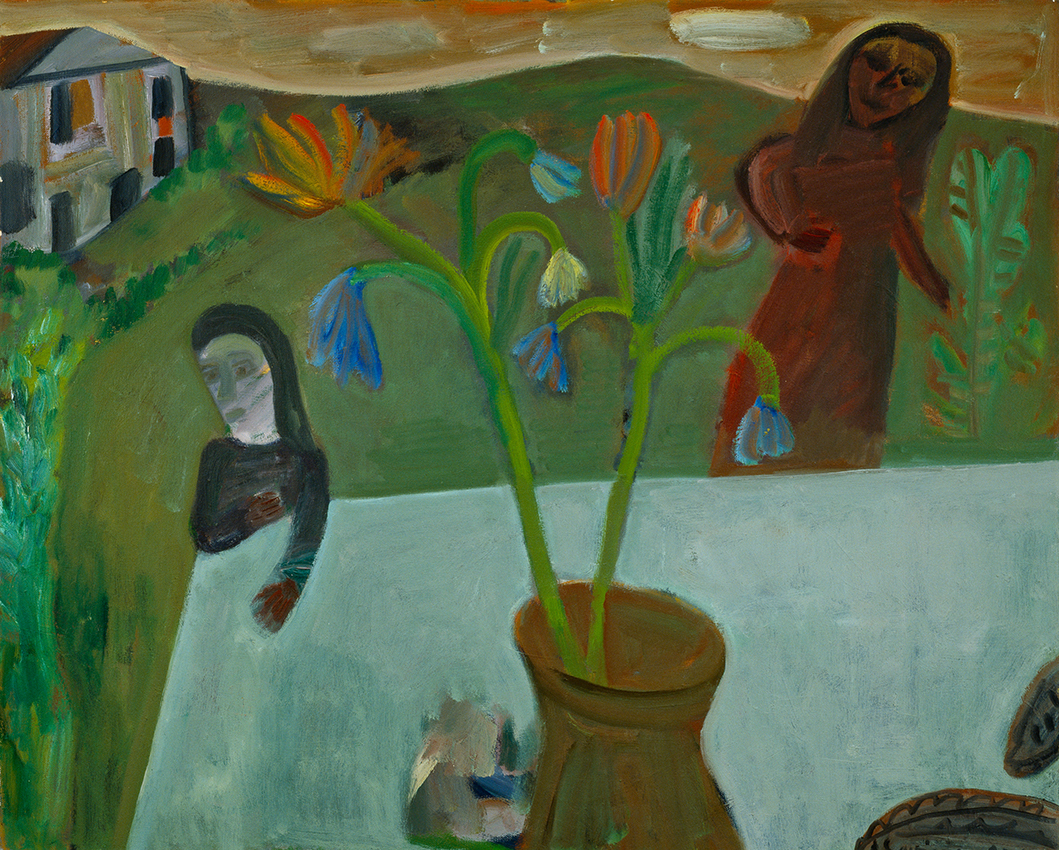 | |
Augustinas Savickas. Anchorets, 1990-1998, Oil on canvas | Augustinas Savickas. Remembrance. 1990-1991, Oil on canvas |
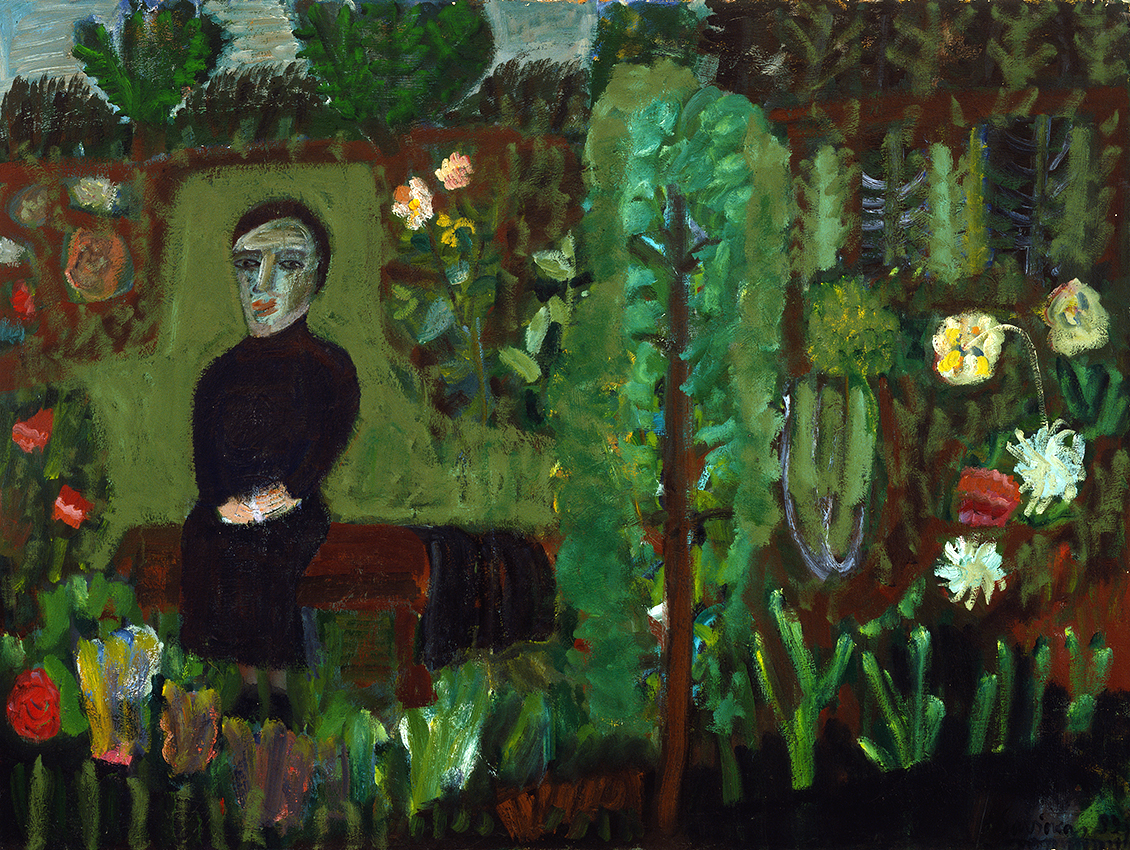 | 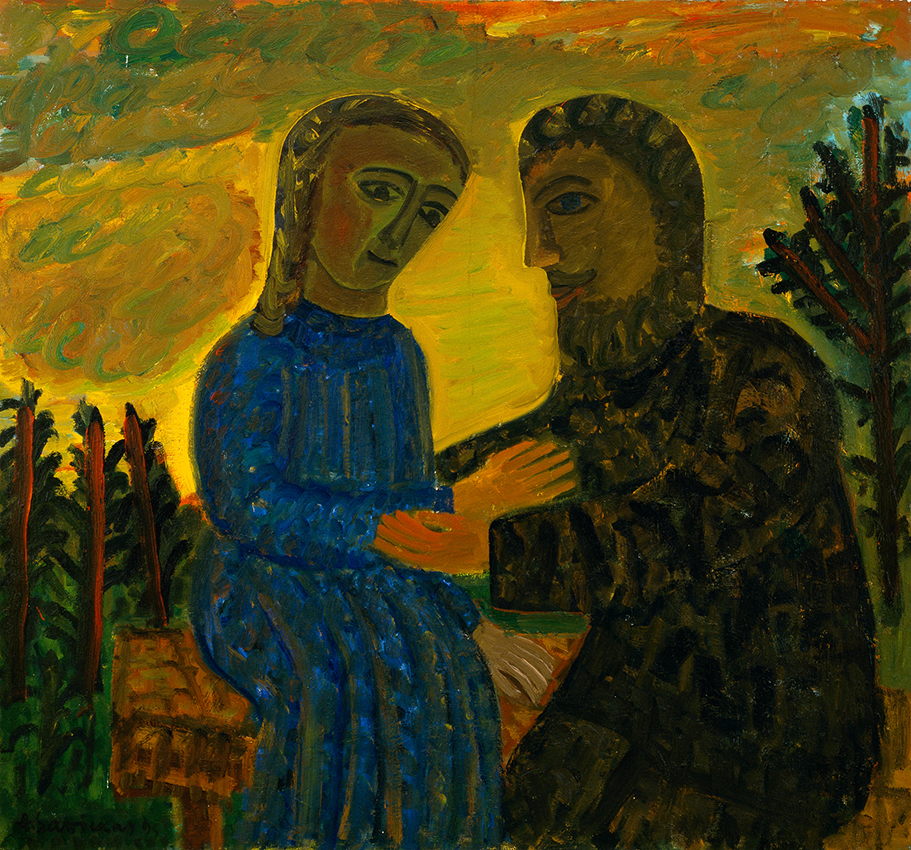 | |
|
| Augustinas Savickas. Evening. 1995, Oil on canvas |
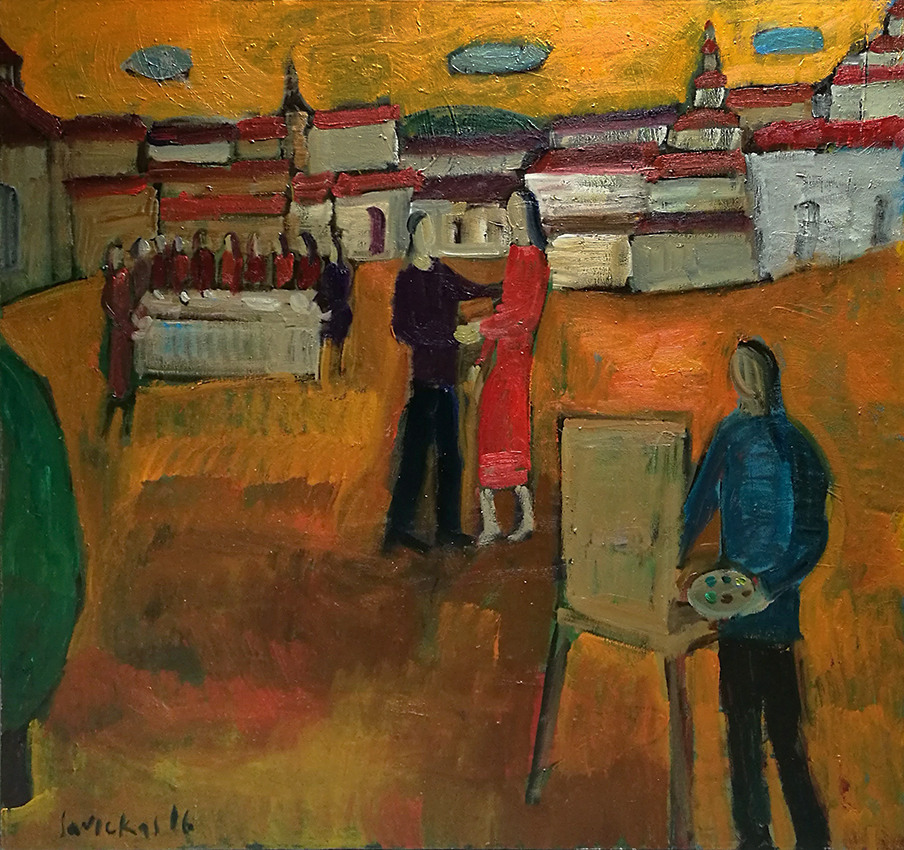 | 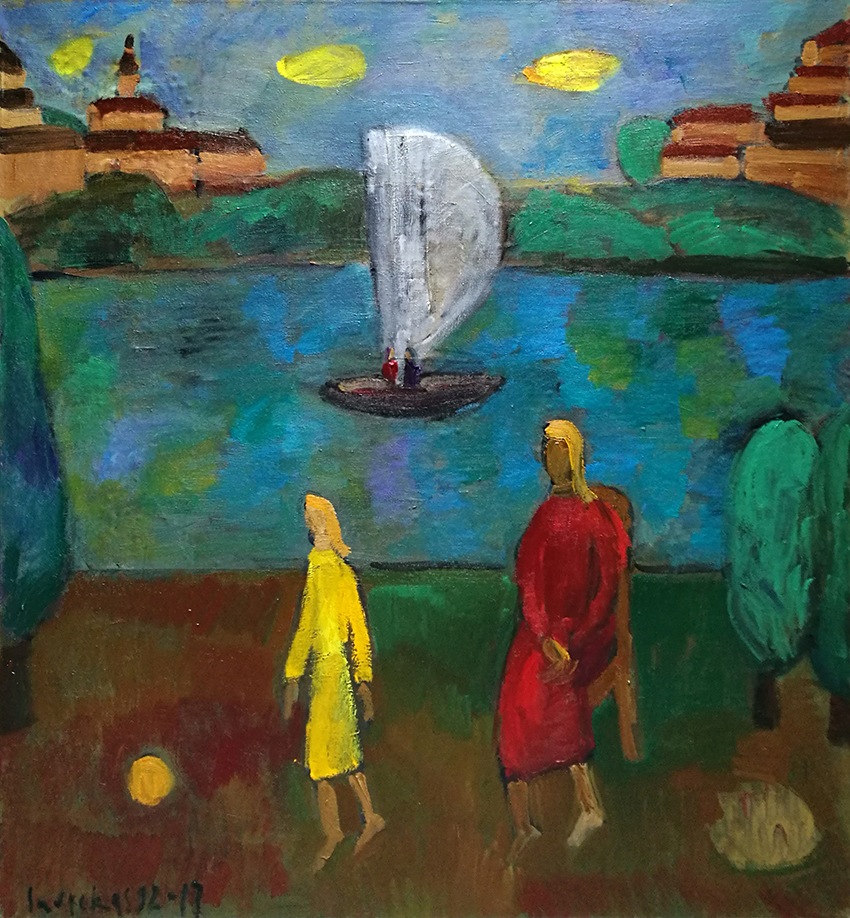 | |
| Raimondas Savickas. Artist, 2016, Oil on canvas | Raimondas Savickas. Childhood Days |
| AND FLOWERS Family history outlives its creators. A unique worldview unfolds through the most unexpected details. Ramunė Savickaitė (1983), Raimondas’ daughter, continues in the footsteps of the Savickas family artists. Ramunė graduated from Vilnius College of Design with major in fashion design, currently studies the History of Art at the Vilnius Academy of Arts, but also devotes her life to visual arts. The virtual exhibition presents her still life with a dominant flower motif and this is also Ramunė’s preferable art genre. Her painting ‘Autumn Still Life’ (2015) displays some hints of the favourite colours of Algirdas Savickis: deep, intense colours are dimmed and used in contrast with the bright tones of flower blossoms. Ramunė demonstrates a subtle choice of colour which serves as undoubted evidence of her being a gifted artist able to convey the mood of her paintings with the help of different shades of colour. Ramunė has shown interest in academic drawing and works on portraits as well. Her portrait ‘Grandfather’ (2015) was painted already after the death of Augustinas Savickas. In the painting Augustinas Savickas is focussed on his collocutor. Can it be that Augustinas is talking about his brother Algirdas? |
Ramunė Savickaitė at the Tolerance Center, 2nd of March, 2020 |
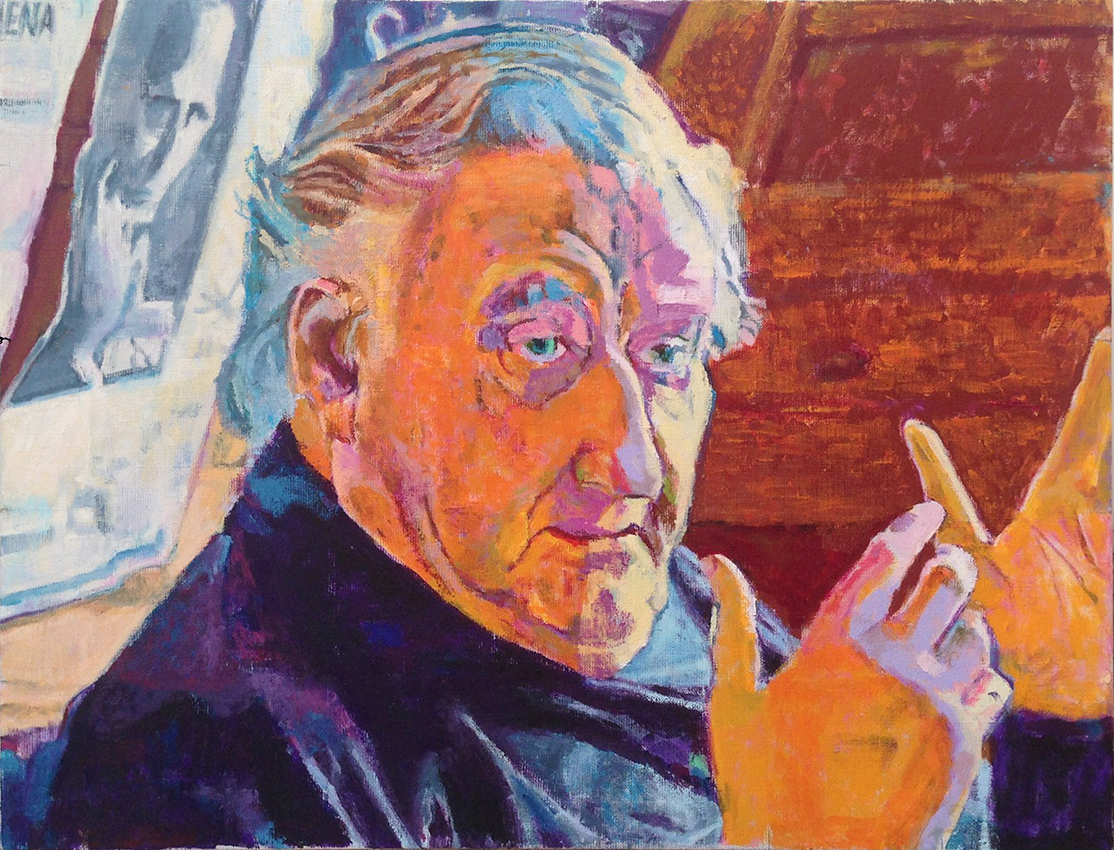 | 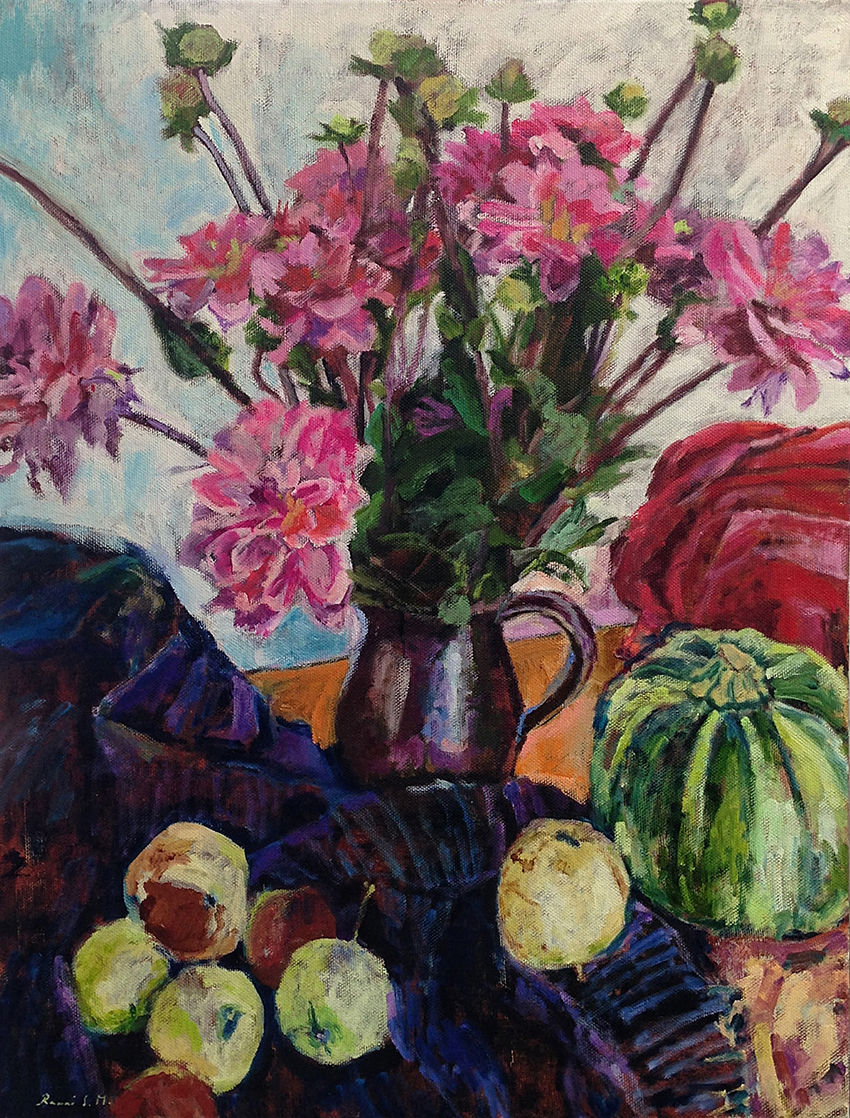 | |
| Ramunė Savickaitė. Grandfather. 2015, Oil on canvas | Ramunė Savickaitė. Autumnal Still Life |
| P.S. Jurgis Savickis (1890-1952) was a broadly educated man, writer and diplomat. All his life he remained interested in art and had a collection of Lithuanian and folk art. Jurgis Savickis was the patriarch of the Savickis (Savickas) dynasty. The geopolitical convolutions of the 20th century did not spare the family of Jurgis and Ida. Their elder son Algirdas was not destined to unfold his artistic talent. Their other son Augustinas, classic of the Lithuanian art, lost his brother and mother at a very young age and painfully missed them for the rest of his life. According to Augustinas Savickas, his ‘father was interested in everything. He was more than just an artist or a writer. He was a politician. He was a politician with the worldview of an artist.’ |
| JURGIS SAVICKIS. Born in Pagausantis Estate (Ariogala Parish, Lithuania) in 1890. Died in Roquebrune (France) in 1952. |
| Lithuanian diplomat and modernist writer. In 1902–1910 studied at a gymnasium in Moscow and later continued his art studies there. In 1913–1914 studied at the Academy of Fine Arts in Krakow. During World War I worked for Lithuanian committees to aid war victims. In 1919-1940 was the Lithuanian envoy to Scandinavian countries, employee of the Ministry of Foreign Affairs of the Republic of Lithuania and the Lithuanian envoy to the League of Nations in Geneva. In 1940-1952 lived in Roquebrune, South of France. All his life remained interested in art, painted, drew sketches, had a collection of Lithuanian and folk art, promoted Lithuanian painting and folk art abroad. |
| ALGIRDAS SAVICKIS. Born in Copenhagen in 1917. Died in the Kaunas Ghetto in 1943 |
| Son of the Lithuanian diplomat Jurgis Savickis and Ida Trakiner, a doctor from a Jewish family in Saint Petersburg. In 1926–1930 attended the German primary school in Kaunas. From 1930 to 1934 studied at Wickersdorf boarding school in Germany. In 1935–1938 studied English in St. Galen, Switzerland. In 1938–1940 took painting classes with prof. Justinas Vienožinskis at the Art School of Kaunas. In 1940 worked at Vytautas Magnus University in Kaunas. When in 1941 Germans occupied Lithuania, voluntarily moved to the Kaunas Ghetto with his Jewish wife Julika and his stepdaughter Regina. Murdered in the ghetto in 1943. |
| AUGUSTINAS SAVICKAS. Born in Copenhagen in 1919. Died in Vilnius in 2012. |
| Son of the Lithuanian diplomat Jurgis Savickis and Ida Trakiner, a doctor from a Jewish family in Saint Petersburg. Painter, classic of the Lithuanian art, art researcher and art critic. Returned to Lithuania with his mother after his parents got divorced in 1927. In 1939 graduated from the 3rd Gymnasium in Kaunas and got enrolled with the Art School of Kaunas. In 1941–1944 studied painting at the Art School of Moscow. In 1949 graduated from the Vilnius Art Institute. From 1951 was member of the Lithuanian Artists‘ Association and lecturer at the Vilnius Art Institute. Received a number of awards, including the 5th Class Order of the Lithuanian Grand Duke Gediminas (1994) and the National Prize (1999). Lithuanian and foreign museums have a number of his works. The artist’s works can also be found in private collections. |
| RAIMONDAS SAVICKAS. Born in Vilnius in 1955. |
| Son of Augustinas and Liza Savickai. In 1979 graduated from the Faculty of History of Vilnius University with major in Library Studies. In 1979–1984 worked in the Central Library of Šilalė and Martynas Mažvydas National Library of Lithuania. Studied drawing at the Art School of Vilnius for four years and took lessons with artist Petras Repšys. Studied painting in the studio of his father Augustinas Savickas. From 1988 – member of the Lithuanian Artists‘ Association. Organized over 30 personal exhibitions and took part in more than 50 group exhibitions in Lithuania and abroad. In 1994 established the Savickas Art Gallery and heads it until now. In 2000 opened an art school for adults in his studio, first of its kind in Lithuania. Public activist, member of the LRT Council. Since 2014 has been working as an assistant to the Member of the EU Parliament Petras Auštrevičius. In 2016 awarded with the Cross of the Knight of the Order For Merits to Lithuania. |
| RAMUNĖ SAVICKAITĖ. Born in Vilnius in 1983. |
| Daughter of Raimondas and Birutė Savickai. In 2007 graduated from the Vilnius College of Design with major in Fashion Design. Since 2009 has been working as a project coordinator at the Savickas Art Gallery. In 2011 graduated from the Savickas Art School. Currently studies the History of Art at the Vilnius Academy of Arts. Actively participates in group exhibitions and international symposiums. |
| ↑ | ← |


